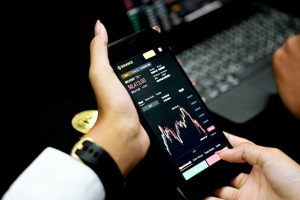Forex trading is one of the most popular and profitable investment options in the world, and the use of leverage is a crucial aspect of forex trading. Leverage is a financial tool that allows traders to amplify their profits by borrowing money from their brokers to open larger positions than they could with their own capital. It is a double-edged sword that can increase profits but also increase losses. In this article, we will explain what leverage is in forex trading and how it works.
What is leverage in forex trading?
Leverage is a financial tool that enables traders to increase their trading exposure without having to invest more capital. It is a mechanism that allows traders to borrow money from their brokers to open larger positions than they could with their own funds. Leverage is expressed as a ratio, such as 1:100, 1:200, or 1:500, which represents the amount of borrowed money the trader can use to open positions.
For example, if a trader has a $1,000 trading account and uses leverage of 1:100, they can open a position worth $100,000. In this case, the broker lends the trader $99,000, and the trader invests $1,000 from their account. If the position gains 1%, the trader will earn $1,000, which is 100% of their initial investment. However, if the position loses 1%, the trader will lose $1,000, which is 100% of their initial investment.
How does leverage work?
Leverage works by magnifying the trader’s profits and losses. When a trader uses leverage, they are essentially borrowing money from their broker to increase their trading exposure. The broker requires the trader to deposit a certain amount of capital, known as the margin, which is a percentage of the total position value. The margin requirements vary depending on the broker and the trading instrument, but typically range from 1% to 5%.
For example, if a trader wants to open a position worth $100,000 with a margin requirement of 1%, they would need to deposit $1,000 into their trading account. The broker would lend the remaining $99,000 to the trader, and they would use the total amount to open the position.
If the position gains 1%, the trader would earn $1,000, which is 100% of their initial investment. However, if the position loses 1%, the trader would lose $1,000, which is 100% of their initial investment. If the trader’s losses exceed their margin, the broker will issue a margin call, which requires the trader to deposit additional funds to maintain their position or close it out.
What are the benefits of leverage in forex trading?
There are several benefits of using leverage in forex trading, including:
1. Increased trading exposure: Leverage allows traders to open larger positions than they could with their own capital, which increases their trading exposure and potential profits.
2. Low capital requirements: Leverage enables traders to participate in the forex market with a relatively small amount of capital, which is ideal for retail traders.
3. Diversification: Leverage allows traders to diversify their portfolio and trade multiple currency pairs simultaneously, which spreads their risk and increases their chances of success.
4. Flexibility: Leverage provides traders with the flexibility to adjust their trading strategy and take advantage of market opportunities as they arise.
What are the risks of leverage in forex trading?
While leverage can increase profits, it also amplifies losses. The risks of using leverage in forex trading include:
1. Margin call: If the trader’s losses exceed their margin, the broker will issue a margin call, which requires the trader to deposit additional funds to maintain their position or close it out.
2. Losses can exceed capital: If the trader’s losses exceed their available capital, they can end up owing money to their broker, which can have serious financial consequences.
3. Market volatility: The forex market is highly volatile, and leverage can magnify the impact of market fluctuations, leading to significant losses.
4. Emotional trading: Leverage can increase the emotional pressure on traders, leading to impulsive and irrational trading decisions.
Conclusion
Leverage is a powerful financial tool that enables traders to increase their trading exposure and potential profits. However, it also amplifies the risks of trading, and traders must be aware of the potential downsides of using leverage. It is important to use leverage responsibly and to have a solid trading plan in place to manage the risks of forex trading.





